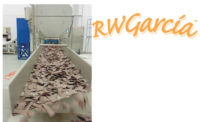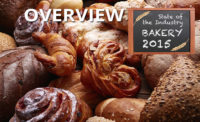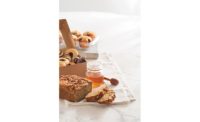As is often the case, this story begins with a man and a dream. The year was 1898, and Spain and the United States briefly found themselves entrenched in what would become the Spanish-American War. A young Juan Moré traveled from his home in the Catalonia region of Spain to Cuba to serve. The war itself lasted just over three months, but Juan had developed an affinity for Cuba—and its people. So he stayed.
Years later, Juan traveled along as part of an ongoing influx of Cubans to Florida (travel between the two countries during those days was commonplace), ending up in a new neighborhood of Tampa known as Ybor City, founded in the 1880s, the new U.S. cigar capital. The area was also a popular destination for Italian and German immigrants.
Juan carried with him a recipe and traditional process for baking Cuban bread, and a dream of owning a business. In true entrepreneurial fashion, he set out to bring that dream to life.
A co-op of bakers—including Juan—and cigar makers formed in 1915 to open three bakeries: La Primera, La Segunda and La Tercera. When the La Primera and La Tercera bakeries closed shop, Juan bought La Segunda outright and soldiered forward, baking 36-inch-long loaves of Cuban bread for Ybor City’s citizens. His sons—Ricardo, Raymond and Antonio—eventually joined the family business, now known as La Segunda Central Bakery, and years later, Raymond’s and Anthony’s sons—Raymond Jr. and Anthony Jr.—entered the business and continued its growth. Today, the bakery is run by Anthony Jr., along with his son, Anthony Copeland More (known as Copeland)—the fourth generation of the family to join the business.
A century of growth
For decades, daily delivery of Cuban bread was common in Ybor City. The 36-inch-long loaf size for Cuban bread related to daily portioning. “There was a bread man who would go around, and everyone had a nail on their door,” says Copeland, vice president of the bakery. “He would leave the bread on the nail, and the loaf was supposed to be long enough to feed the whole family for the day.”
Today, La Segunda produces an average of 15,000 loaves daily during the busy season, along with other products. The bread still feeds the greater Tampa area, but it also goes to customers across the country.
The bakery maintains a diverse customer base, including historic fine dining, like the historic Columbia Restaurant and the family-oriented chain Beef ‘O’ Brady’s, which sports more than 200 locations across 23 states. School foodservice is also a strong segment for the bakery, along with select retailers.
While La Segunda still bakes traditional 36-inch loaves of its Cuban bread, each with a palmetto leaf baked atop the crust to naturally score it, the 18-inch loaf—what Copeland calls a “half loaf”—is now the most-common type sold to customers outside of the Tampa area, shipped frozen.
La Segunda began making the 18-inch loaves years back during a period of expansion for the Columbia Restaurant business. The original Columbia Restaurant in Ybor City is the oldest restaurant in Florida, and perhaps the largest Spanish restaurant in the world, with 1,700 seats over 15 different dining rooms. Over the years, the restaurant added locations (now at seven). To meet demand and maintain the customer, La Segunda began baking the 18-inch loaves—a more-manageable size for shipping—and delivering them frozen, so the restaurants could thaw and use what they needed based on demand.
Cuban bread is particularly famous as the foundation of the Cuban sandwich, alternately known as the mixto or Cubano. “The construction of the Cuban sandwich is a perfect representation of all the societies that converged on Ybor City,” says Copeland. As the story goes, the Spanish brought the ham. The Italians brought the Genoa salami, while the Germans brought the Swiss cheese, pickles and mustard. And the Cubans brought the mojo pork and the bread. It’s then heated in a sandwich press, or on a plancha, to meld the ingredients into a harmonious culinary delight that now appears on menus from coast to coast.
Pan Cubano
The heart of the Cuban sandwich is the bread. Many aspects of La Segunda’s operation have remained consistent through the years, including the knowledge of the original process Juan brought with him from Cuba. “The most important aspect of making the Cuban bread is the process of how the bread is made,” says Copeland. “It’s really what makes it unique.”
All La Segunda products remain truly artisan, as the bakery maintains a highly hands-on approach. “The bread comes out of the mixer, and we use a scale and a rounder to cut it to size and round it into a ball. Then the guys put the balls onto racks to proof.” He notes that the bakers intuitively know when the bread is ready to roll.
After rolling, panning and laying the traditional palmetto leaf across the top of the bread—a La Segunda signature—the loaves are moved to the retarder, and then to an spot outfitted with high-powered fans to subtly harden the exterior, a key step in creating the characteristic cracker-crisp exterior of the loaf, while maintaining a soft, tender crumb inside. Then they’re off to the hearth ovens to bake. The process might or might not involve steam, depending on the weather.
La Segunda’s Cuban bread is made with high-gluten spring wheat flour specially created for the bakery. The only change to the recipe after more than 100 years of operation is a recent substitution of palm oil for lard to remove trans fat from the products.
The hands-on approach at La Segunda leads to an acceptable range of variability in the loaves, a desirable characteristic to consumers seeking artisan touches in their baked goods today.
“The lines are far from fully automatic—our bread needs too much human attention,” says Copeland. “We tried automating things more a while back, and the flavor profile changed.” So now La Segunda is back to ambient proofing.
“What we tried to do was automate the initial proofing stage,” says Copeland. However, he notes that climactic and other variables within the bakery often affect how long the bread needs to proof to develop peak flavor notes. “We tried to take the dough after the rounding stage and put it into an intermediate proofer,” he says. “It worked on some days, but on others, it didn’t.”
The seasonal switch from spring wheat to winter wheat also impacts absorption levels of the flour, “and the protein level might change a little bit,” Copeland says. So the bakers need to react accordingly.
“They mix, and they learn—how much more water it takes, and how much ice it takes,” says Copeland. “The most-important thing is the mix.” He notes that his master bakers always mix to a certain temperature based on the weather—and whoever is working the line during the shift. “Some crews are faster than others.” Every shift features a master baker and a head oven man.
Automation still plays a part in making the 18-inch loaves of Cuban bread, which rely on a moulder to roll and shape the loaves.
Other products offered by La Segunda include media noche (“midnight”) rolls (8-inch sandwich-style rolls that are slightly sweeter than the Cuban bread and made with eggs, also used to make Cuban sandwiches), coca rolls (sweet, soft and fluffy hamburger buns, made with sugar) and torta rolls (bolillo-style rolls for torta sandwiches). Copeland notes that the coca buns would be ideal for upscale burger businesses. The bakery also offers honey-wheat Cuban bread made with 51 percent Ultragrain flour—a product popular with school foodservice—made with honey instead of sugar.
The La Segunda storefront
The carry-out storefront aspect of the bakery serves as the face-to-face connection between La Segunda and the population of Ybor City and greater Tampa.
“When my dad and his cousin entered into the business, my grandfather and his brother helped them open a bakery down the street,” says Copeland, and pastry—not bread—was the focus. It was a test put forth, and they proved successful. So, in the early 1970s, they folded the pastry business into the existing La Segunda bakery so everything was housed in one building, which is how things continue today.
Much like Ybor City and its iconic Cuban sandwich, the product selection via La Segunda’s storefront retail operation is a melting pot. The bread, pastry and foodservice products sold out of the bakery’s storefront shop account for roughly 20 percent of La Segunda’s business. Top selections include Latin-accented items like guava turnovers—a best-seller—and Puerto Rican quesitos (cheese turnovers). The storefront also sells items like apple turnovers, Danishes, muffins, doughnuts, cannoli, éclairs, Spanish flan, brownies, bread pudding, cheesecake, napoleons and cookies like tortica de moron (Cuban sugar cookies)—an amazingly diverse selection. “Our retail bakery has close to 100 pastries,” notes Copeland. All items are baked on-site.
La Segunda’s storefront is also a carryout foodservice destination, attracting customers throughout the day. Beyond pastries, the breakfast crowd goes in for Cuban toast (buttered, toasted Cuban bread), breakfast bowls and breakfast sandwiches, naturally served on Cuban bread—and perhaps a café con leche. At lunch, the operation offers a range of sandwiches, including traditional Cuban sandwiches and Sicilian muffaletta. La Segunda also recently added a line of salads to the storefront menu, including a Mojo Chicken Caesar salad. Other savory items include meat pies, scacciata (Sicilian pizza served cold), deviled crab (crab meat croquettes), empanadas and chorizo rolls.
Copeland notes that overall sales for the bakery have doubled over the past five years in tandem with expansion into national distribution—momentum that he would like to see continue. “Our goal is to double sales every five years,” he said. “To succeed, we have to continue to expand our product line. We also plan to open more retail locations.” He also notes that the bakery will need more production space to accommodate the growth.
After all, there’s likely a fifth generation of bakers at La Segunda who, soon enough, will need to ply their hands at the time-honored tradition of crafting truly artisan Cuban bread.

















